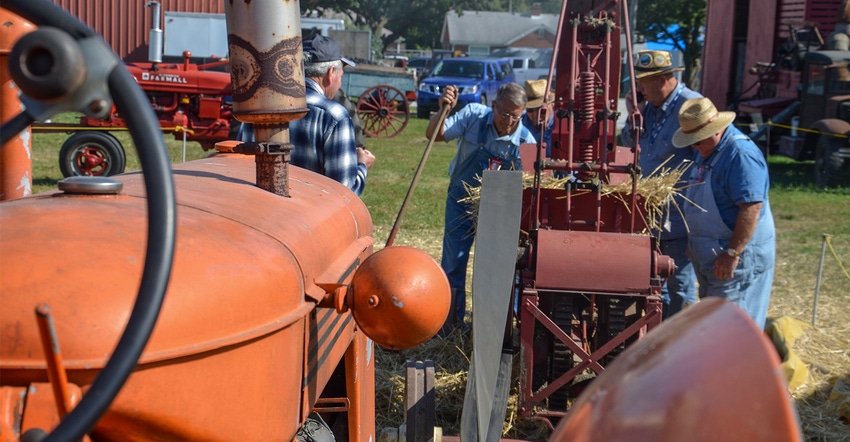September 18, 2017

An agricultural engineering professor recently told his students to ask someone in the ag industry what he or she considered the top two advancements in agriculture in the past 100 years. Then the student had to agree or disagree with each, and defend that stance.
Listing 50 accomplishments that helped lead to modern agriculture sounds a whole lot easier than picking two. Here’s our list of 10. You probably have your own list. In Thursday’s blog, we’ll take a shot at defending two of these choices as the students did.
For now, here’s our top 10 agricultural advancements from the past 100 years.
1. The tractor. The Waterloo Boy, which led to the first John Deere tractor, is often credited as the first tractor.
2. Electricity for rural areas. An old slogan said: “Who brought lights to the country?” The answer is the REMC, or Rural Electricity Membership Cooperative. Until farmers banded together to foot the cost of installing poles and stringing lines, it was dark in the country.
3. Hybrid seed corn. In the late 1920s, a corn yield of 20 bushels per acre might have been acceptable. Varieties were open pollinated. Corn yields didn’t take off until innovative farmers, working with far-sighted Extension leaders, discovered how to raise hybrid seed corn.
4. The modern combine. It took combines — machines that could cut the crop on the front end, keep the grain in a hopper and send residue out the back — to revolutionize harvest. Some early models were crude by today’s standards, such as the John Deere 12 A, the International 64 or the Allis-Chalmers All-Crop 66, but they set the stage for future developments.
5. Shelled corn and self-propelled combines. Many loads out of the first self-propelled combines like the John Deere 45 were stored as shelled corn in cribs sided with tin. Soon farmers put up grain bins. Grain dryers followed.
6. A modern generation of tractors. Whether you drive green tractors or not, it’s hard to argue with the opinion that John Deere elevated tractors to a higher level when it introduced the New Generation tractors in 1960. The John Deere 4020 would soon become a standard of the industry.
7. Nitrogen fertilizer, herbicides and insecticides. Corn yields took off when Extension agents helped farmers realize corn needed nitrogen, and the ag industry helped figure out how to provide it. Some early insecticides and herbicides would prove to have environmental risks, although some, like atrazine and 2,4-D, are still players today. Row banders to get weeds in the row were a big deal before broadcast sprayers came along.
8. The Vermeer baler. Gary Vermeer, Pella, Iowa, ushered in a whole new era for livestock producers when he demonstrated his big round baler in the late 1970s.
9. Biotechnology and GMO crops. The discovery that you could move a helpful trait from one organism to another was the first salvo in what has led to discovering whole genomes of crops and animals. GMOs may be controversial, but there is no debate that they changed agriculture forever.
10. Precision agriculture. You could break this one into many facets, from yield monitors to autosteering to RTK guidance. It’s the backbone that allows farmers to treat different areas of fields more precisely.
You May Also Like




